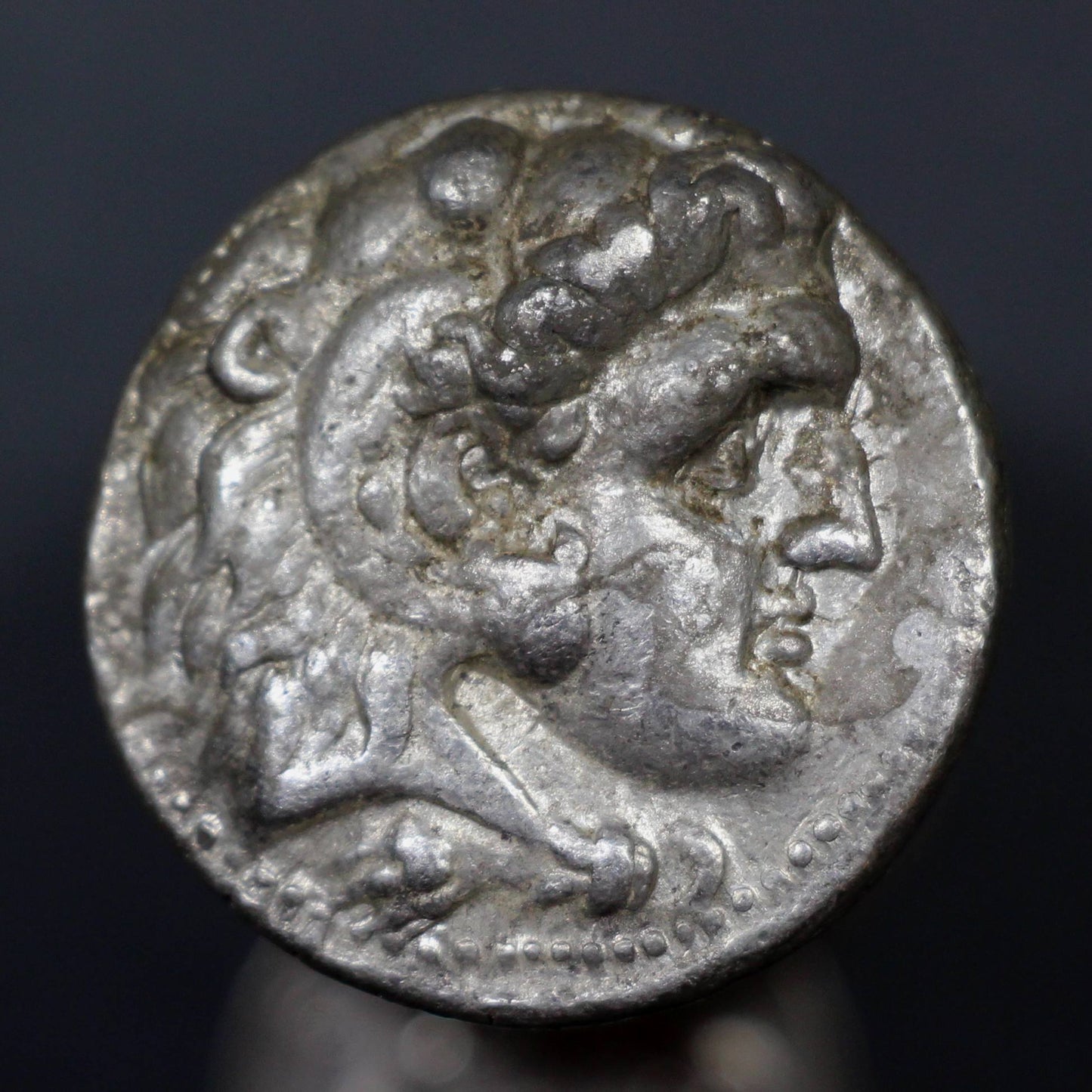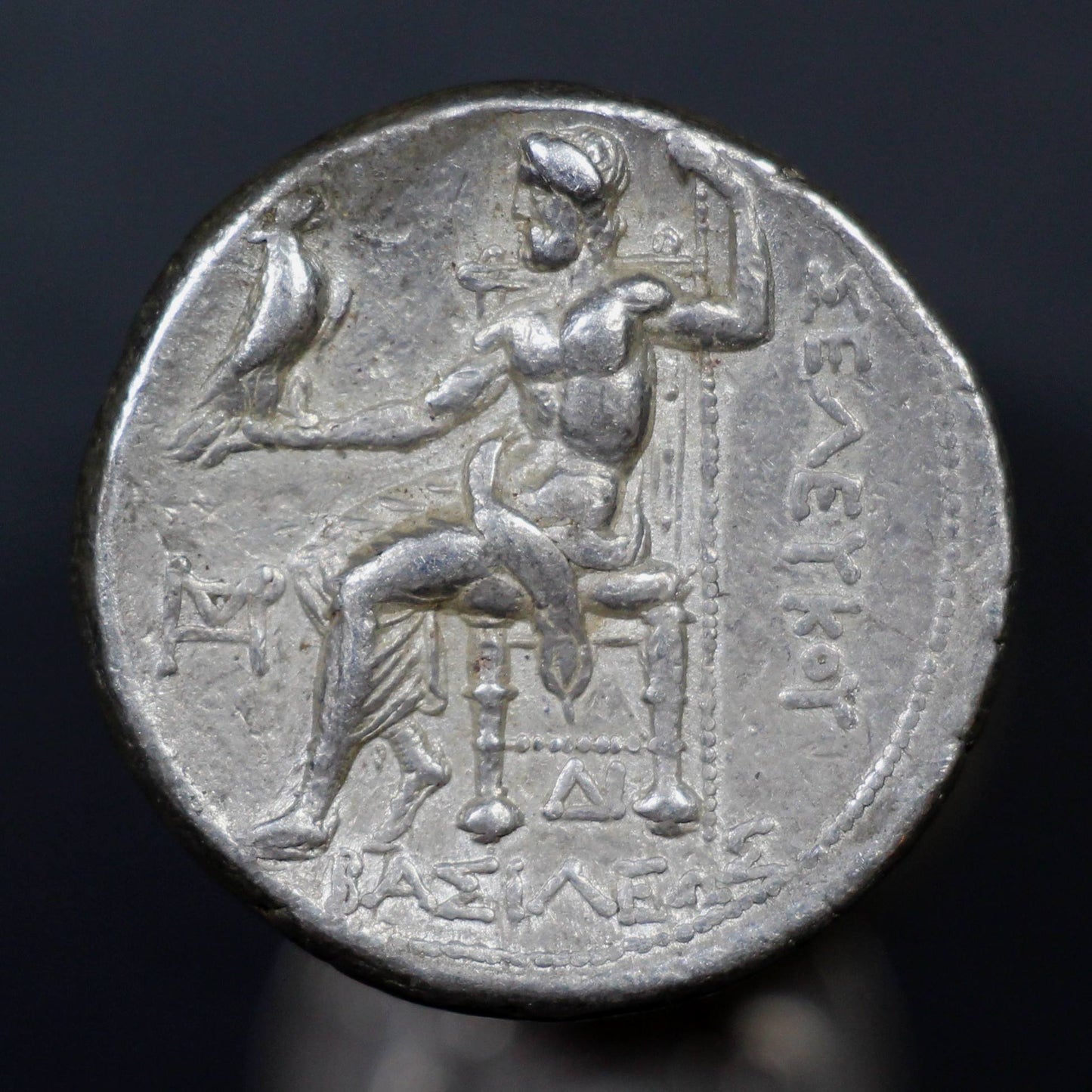original skin coins
320 B.C. Greece Silver Tetradrachm, Alexander the Great
320 B.C. Greece Silver Tetradrachm, Alexander the Great
Couldn't load pickup availability
c. 320 B.C. Greece Silver Tetradrachm, Alexander the Great. Moderate wear, strong strike, well-centered, dark patch of toning on obverse. 26mm diameter, 17.1g weight, silver.
In 336 B.C., Alexander ascended to the throne of the small kingdom of Macedon in Greece. Less than a decade later, he had conquered half of the known world, building an empire that stretched from Greece all the way to the northwestern corner of India. Poised to invade the Arabian peninsula, Alexander was struck down by a sudden illness (possibly poisoned) and died at the age of 32. His empire did not outlive him - after Alexander's death, his former generals grappled for power, splitting the empire into many smaller kingdoms.
While Alexander died in 323 B.C., the design used on coins struck during his lifetime continued to be used on coins throughout his former empire for centuries to come. The Alexandrian silver drachm and tetradrachm was a powerful symbol of legitimacy, and Alexander's successors sought to associate themselves with his reign by copying his coins. The tetradrachm was the largest silver coin produced for purposes of normal commerce in ancient Greece. The Alexandrian tetradrachm features a portrait of the god Hercules, helmed in the skin of the Nemean lion - the portrait was designed to incorporate Alexander's own facial features, elevating him to semi-divine status. The reverse of the coin features Zeus, the king of the gods, seated on his throne at Mt. Olympus. An eagle, the animal Zeus used as his personal messenger, is perched on his arm - perhaps listening to his latest instructions.
Share



